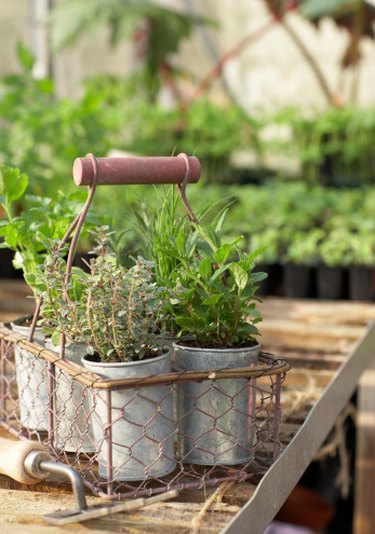
Thyme is a savory herb that produces tiny leaves and flowers on woody stems. The plant is easy to grow, but may occasionally suffer fungal or rot diseases if grown in damp conditions. Remove blackened leaves and diseased plant parts and cut back the plant after flowering and in the fall to keep it compact and healthy.
Drainage
Video of the Day
Thyme grows best in well-drained, somewhat coarse or sandy soil. In wet, heavy soils, the plant's roots may rot, causing black leaves and a foul odor. Amend heavy soils with compost, manure and sand to improve drainage, or grow thyme in containers or raised herb gardens. If the plant's roots are rotted, the best option is to discard the plant and start over.
Video of the Day
Disease
Fungal diseases may afflict thyme occasionally. Remove affected plant parts and spray with a fungicide. Prevent fungal diseases by growing thyme in full sun and well-drained soil and by spacing the plants so air circulates freely.
Hot Summers
Thyme may dwindle in hot, humid weather. The leaves may occasionally turn black, although the center of the plant more commonly dies out and growth dwindles. Prune the plant back to encourage new compact growth. The plant will likely recover when the weather cools.
Frost
Thyme is a perennial herb in most climates; however, the leaves may turn black and die back after a heavy frost. Remove the dead plant material. Plant thyme varieties adapted to your climate. Low-lying, trailing thyme is more cold hardy than tall thyme. Mulch the plants with straw or wood chips and plant them in a protected area. Replace thyme plants every three to four years as they become woody.